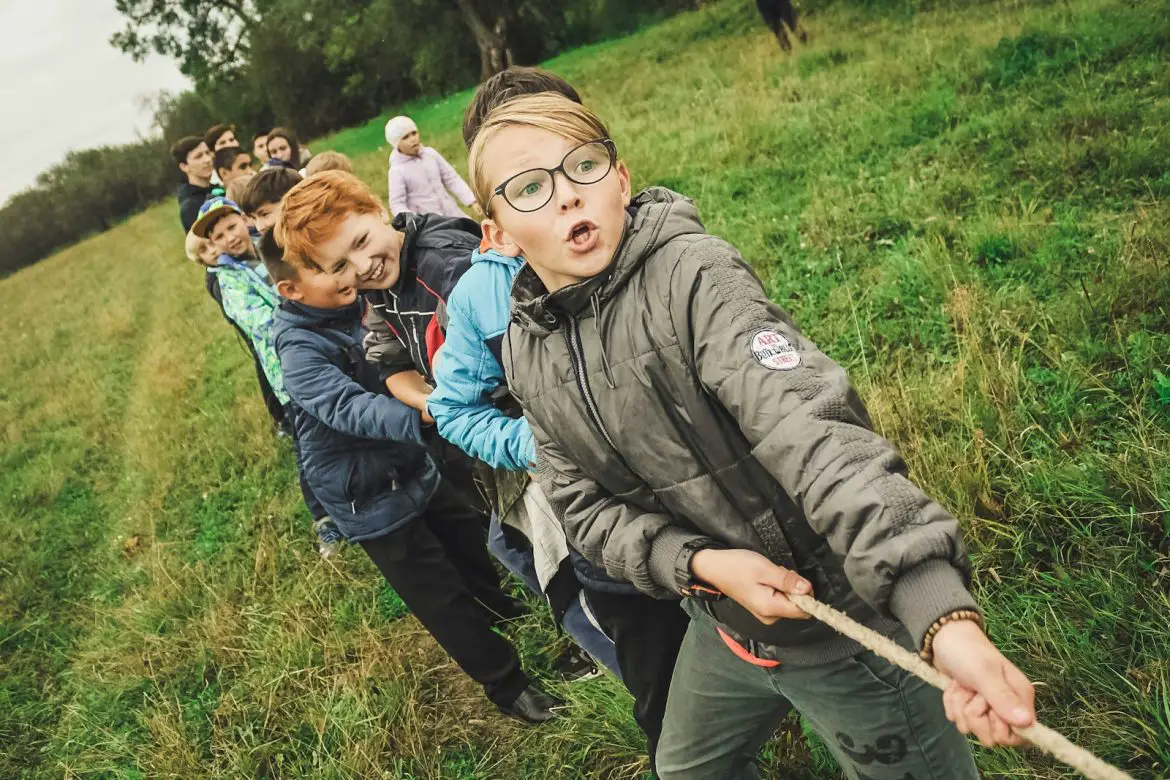The teenage years are a time of immense growth and discovery. As educators, it’s our responsibility to nurture students’ passions and expand their horizons during these formative years. Although traditional teaching methods have merit, hands-on and experiential learning can genuinely ignite curiosity and engagement.
According to the Educational Resources Informational Center, Students demonstrate increased interest, knowledge, and motivation when experiential learning is incorporated into formal and informal field trip venues.
From explosive science experiments to creative recycled art projects, Extremely fun and educational activities are guaranteed to excite and inspire middle and high school students. Supplementary assistance from online tutors can help ensure these activities engage all learners.
Here are the 7 fun and educational activities for middle and high school students we’re going to see in the article:
I. Engaging Science Experiments
Science comes alive through hands-on experiments that demonstrate complex concepts in action. Online science tutors can also help high school students deepen their understanding.
DIY Volcano
What better way to understand chemical reactions than creating your erupting volcano using household ingredients like baking soda and vinegar? Students can explore the chemical properties of acids and bases and witness the reaction as CO2 gas is rapidly produced, causing a bubbling “lava” effect. The wonder of seeing science in action sparks curiosity and engagement.
Homemade Slime
By making their slime using glue, borax solution, and food coloring, students get a first-hand look at polymer chemistry. They’ll have the chance to observe how atoms link together to form long-chain molecules that have both liquid and solid properties, known as non-Newtonian fluids. Middle school students can get help from an online tutor if they need support with the science behind this project.
Lava Lamps
Creating homemade lava lamps using oil, water, food coloring, and an effervescent tablet allows students to observe convection currents, polarity, and density. They’ll be mesmerized as the blobs of colored water rhythmically rise and fall through the oil. Online tutoring can supplement classroom learning about the science principles at work.
Electromagnets
Constructing simple electromagnets using iron bolts, copper wire, and a power source gives students hands-on experience with electromagnetism. They’ll be able to test how the magnetic field strengthens by adding more wire coils or increasing electric current. If students need help understanding electromagnetism concepts, online tutors can provide support.
Egg Drop Challenge
The classic egg drop activity helps students learn about physics concepts like gravity, acceleration, force, and impact. Armed with simple materials, students must engineer a contraption to protect an egg from a high fall. Online physics tutoring can reinforce the concepts and calculations involved in this engaging experiment.
II. Creative Arts
Encouraging students to express themselves through creative arts fosters imagination and develops critical thinking skills.
Digital Storytelling
Using online tutoring tools like storyboarding software, animation, and video editing, students can create imaginative short films. Students who engage in digital storytelling show improved creative writing abilities.
Recycled Art Projects
Turning recycled materials into art teaches sustainability and sparks creativity. Tasks like making musical instruments from plastic bottles or sculptures from e-waste give reusable items a new purpose. Students engaged in recycled art projects show greater critical thinking skills.
Drama Performances
Acting out scenes from literature, history, or original scripts builds public speaking skills. Discover more ways to enhance public speaking skills and boost confidence through tailored tutoring sessions available at https://stridetutoring.com/english-tutors/. Assigning roles for directors, actors, and tech crew gives each student a creative outlet. Students gain self-confidence after participating in drama performances.
Student Newspapers
Student newspapers offer students the chance to develop their journalistic skills through roles like reporting and editing, fostering teamwork and accountability. Engaging in research, interviews, and narrative crafting, students hone critical thinking and decision-making abilities. Beyond writing, they gain practical exposure to media production, including layout design and photography. Overall, student newspapers promote creativity, learning, and civic engagement, enriching the educational experience.
III. Historical Reenactments
Reenacting major moments in history brings the past to life while developing a deeper understanding of historical perspectives.
Mock Trials
By recreating famous courtroom trials, students gain first-hand insights into key legal proceedings like the Scopes Monkey Trial. Assigned roles for the defendant, attorneys, witnesses, judge, and jury give each student a unique viewpoint into how evidence and arguments took shape. Participating in mock trials improved students’ critical thinking abilities.
Time Capsules
Creating a time capsule gives students a chance to actively reflect on the current cultural and technological landscape and make predictions for the future. By choosing objects that represent today’s world and preserving them in a buried capsule, students engage with history and contemplate how our world may change.
Historical Debates
Engaging in historical debates enables students to embody pivotal figures, breathing life into the past through impassioned oral arguments. By assuming diverse perspectives, they deepen their understanding of historical events and cultivate critical thinking skills. Through research and preparation, students gain insight into the complexities of different viewpoints, fostering empathy and intellectual growth. Ultimately, historical debates serve as dynamic educational experiences, fostering a deeper appreciation for the intricacies of history and its relevance to the present.
Historical Newspaper
Students work together to create historical newspapers, taking on roles of reporters, editors, and artists to cover major events from the past. This collaborative project builds research skills and ingrains historical lessons.
Historical Documentaries
Students can write, film, and edit their historical documentary shorts, synthesizing research into compelling narratives. Students create more accurate and detailed historical narratives after producing their documentaries.
IV. Coding and Technology
In our increasingly digital world, coding, and technology skills allow students to become creators, not just consumers, of technology.
Build a Website
Using HTML and CSS, students can build their live websites on topics they feel passionately about. Coding a site from scratch demystifies web development and shows kids they can put their creativity to work in the digital sphere. Students with basic coding skills prove to have improved sequencing and logic capabilities.
Robotics
Hands-on robotics kits introduce the basics of engineering, design, electronics, and programming. By assembling preset robots or designing their own, students get first-hand experience bringing their creations to life through code. Students who engage in robotics teams demonstrate higher problem-solving skills.
V. Outdoor and Environmental Studies
Connecting with nature fosters environmental awareness and an appreciation for the outside world.
Nature Scavenger Hunts
Scavenger hunts focused on spotting wildlife, birds, trees, leaves, and flowers encourage students to forge a deeper connection with their local ecosystems. Equipped with field guides and binoculars, students can explore nature and work on observation skills.
Community Gardens
By planning, planting, and caring for school gardens, students gain hands-on lessons in botany, horticulture, sustainability, and community service. Taking ownership of a garden plot also develops a sense of responsibility and pride. Students engaged in community garden projects show increased knowledge of core gardening concepts.
VI. Mathematical Challenges
Experiential mathematics activities allow students to develop critical thinking and problem-solving abilities.
Escape Room
In this activity, students must tackle math problems and puzzles to unlock a series of boxes leading to the overall “escape” from the room. It challenges students to work together and apply math principles in exciting, high-pressure situations. Students show greater enthusiasm for math and teamwork after participating in math escape room challenges.
Stock Market Game
Through this simulated stock trading game, students get an introduction to core economic and mathematical concepts while strategizing to create the most profitable portfolio. Tracking real stocks over time teaches data analysis skills and financial literacy. Students engaged in stock market simulations can understand critical mathematical concepts in a short time.
VII. Physical Challenges
Physical activities provide a fun and healthy way to build teamwork, leadership, and problem-solving skills.
Amazing Race
The Amazing Race schoolwide activity immerses students in a thrilling adventure as they navigate campus, tackling a blend of mental and physical challenges. Encouraging quick thinking, teamwork, and courage, it prompts students to stretch beyond their comfort zones. From problem-solving tasks to physical feats, participants engage in a dynamic learning experience that fosters resilience and camaraderie. Ultimately, the Amazing Race sparks excitement, fostering a sense of accomplishment and unity among students.
STEM Olympics
The STEM Olympics immerses students in thrilling competitions like the Egg Drop, Straw Tower, or Robot Race, where they apply STEM skills to vie for medals. Through these physical challenges, STEM education takes on a dynamic and engaging dimension, sparking excitement and creativity among participants. These events not only test students’ technical abilities but also foster teamwork, problem-solving, and innovation. Ultimately, the STEM Olympics provide an exhilarating platform for students to showcase their talents and passion for science, technology, engineering, and mathematics.
Frequently Asked Questions
How can I ensure these activities are accessible to all students?
It’s important to consider adaptations to accommodate different learning styles and needs. Provide written instructions in addition to verbal. Allow flexible grouping and roles. Have alternative materials on hand. Emphasize effort over perfection.
How do these activities align with educational standards?
Each activity can tie into specific learning objectives across subjects like science, math, technology, environmental studies, and history. Identify standards and assess outcomes. Share documentation with administrators, parents, and students.
What are the safety considerations?
Establish clear protocols, model appropriate behavior, and supervise directly. Ensure proper safety gear for experiments, tool usage, and outdoor activities. Provide internet guidance for digital projects. Frequently review emergency procedures.
Conclusion
The middle and high school years represent an opportune time for hands-on, experiential learning that makes academic subjects come alive. These activities can pique students’ interests, unleash their creativity, and empower them with useful real-world skills. By making education interactive and engaging, we can set our students up for lifelong success.


